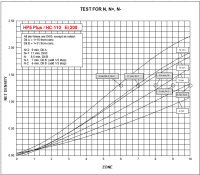I am about to shoot and develop my first 4x5 film. In preparing, I pulled up the time/temp from the massive dev chart for HP5+. On the chart, sheet film, 35mm, and 120 are all developed the same time. I expect this for the roll films, but I intend to develop my sheets in a tray with CONSTANT agitation.
Should I adjust my time, change my agitation plans, or what? Please let me know what you do for HP5+ (at box speed) in a tray. I will be using HC110 with 1+15 dilution per the massive dev chart.
Any and all advice is appreciated.
Should I adjust my time, change my agitation plans, or what? Please let me know what you do for HP5+ (at box speed) in a tray. I will be using HC110 with 1+15 dilution per the massive dev chart.
Any and all advice is appreciated.











